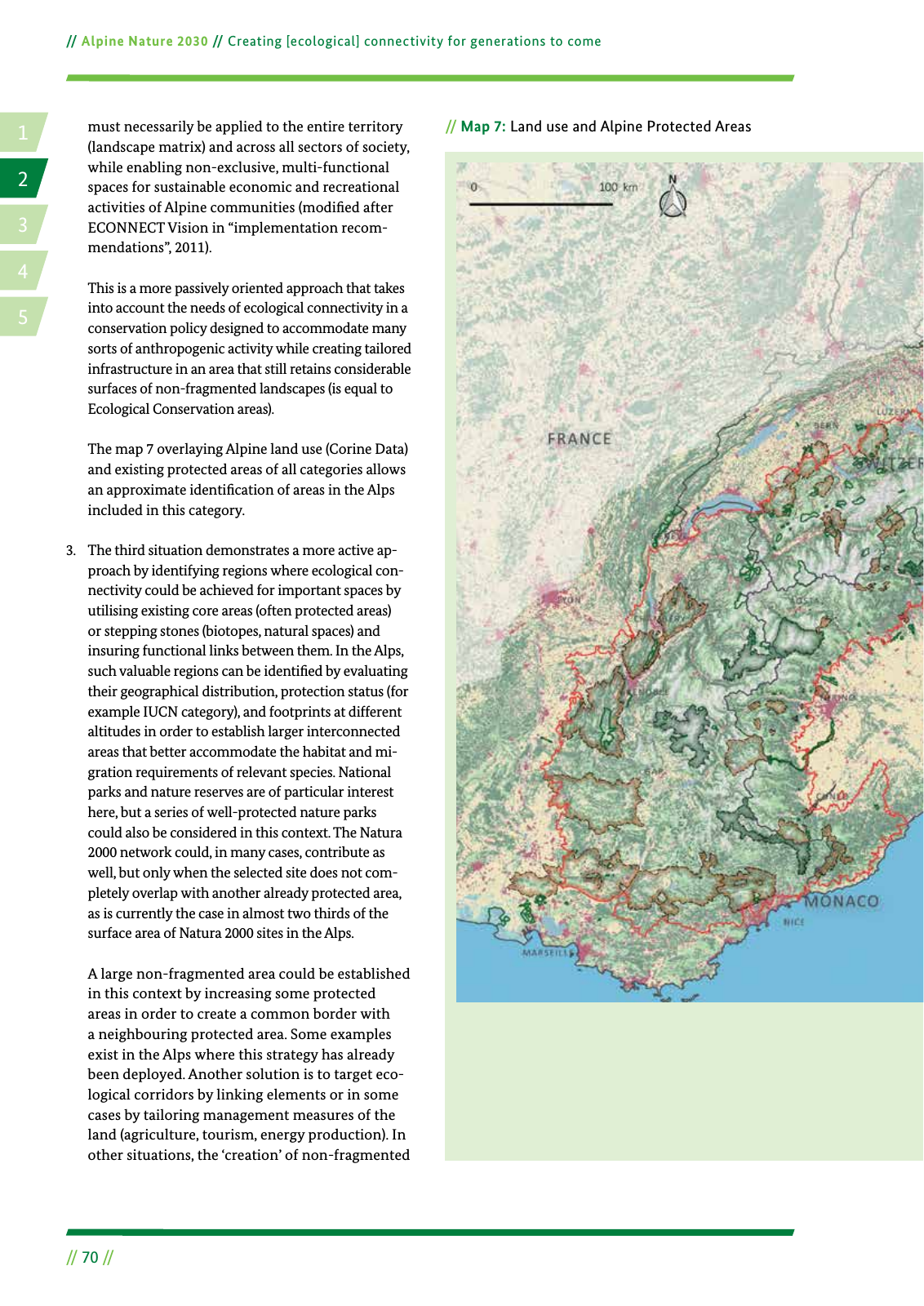Nature reserve Regional Nature park National park Core area Alpine Protected Areas Land cover Urban Agricultural Forests Scrub land Open spaces Wetlands Water bodies Alpine Convention perimeter National border 1 4 2 5 3 70 Alpine Nature 2030 Creating ecological connectivity for generations to come Map 7 Land use and Alpine Protected Areasmust necessarily be applied to the entire territory landscape matrix and across all sectors of society while enabling non exclusive multi functional spaces for sustainable economic and recreational activities of Alpine communities modi ed after ECONNECT Vision in implementation recom mendations 2011 This is a more passively oriented approach that takes into account the needs of ecological connectivity in a conservation policy designed to accommodate many sorts of anthropogenic activity while creating tailored infrastructure in an area that still retains considerable surfaces of non fragmented landscapes is equal to Ecological Conservation areas The map 7 overlaying Alpine land use Corine Data and existing protected areas of all categories allows an approximate identi cation of areas in the Alps included in this category 3 The third situation demonstrates a more active ap proach by identifying regions where ecological con nectivity could be achieved for important spaces by utilising existing core areas often protected areas or stepping stones biotopes natural spaces and insuring functional links between them In the Alps such valuable regions can be identi ed by evaluating their geographical distribution protection status for example IUCN category and footprints at different altitudes in order to establish larger interconnected areas that better accommodate the habitat and mi gration requirements of relevant species National parks and nature reserves are of particular interest here but a series of well protected nature parks could also be considered in this context The Natura 2000 network could in many cases contribute as well but only when the selected site does not com pletely overlap with another already protected area as is currently the case in almost two thirds of the surface area of Natura 2000 sites in the Alps A large non fragmented area could be established in this context by increasing some protected areas in order to create a common border with a neighbouring protected area Some examples exist in the Alps where this strategy has already been deployed Another solution is to target eco logical corridors by linking elements or in some cases by tailoring management measures of the land agriculture tourism energy production In other situations the creation of non fragmented

Hinweis: Dies ist eine maschinenlesbare No-Flash Ansicht.
Klicken Sie hier um zur Online-Version zu gelangen.
Klicken Sie hier um zur Online-Version zu gelangen.